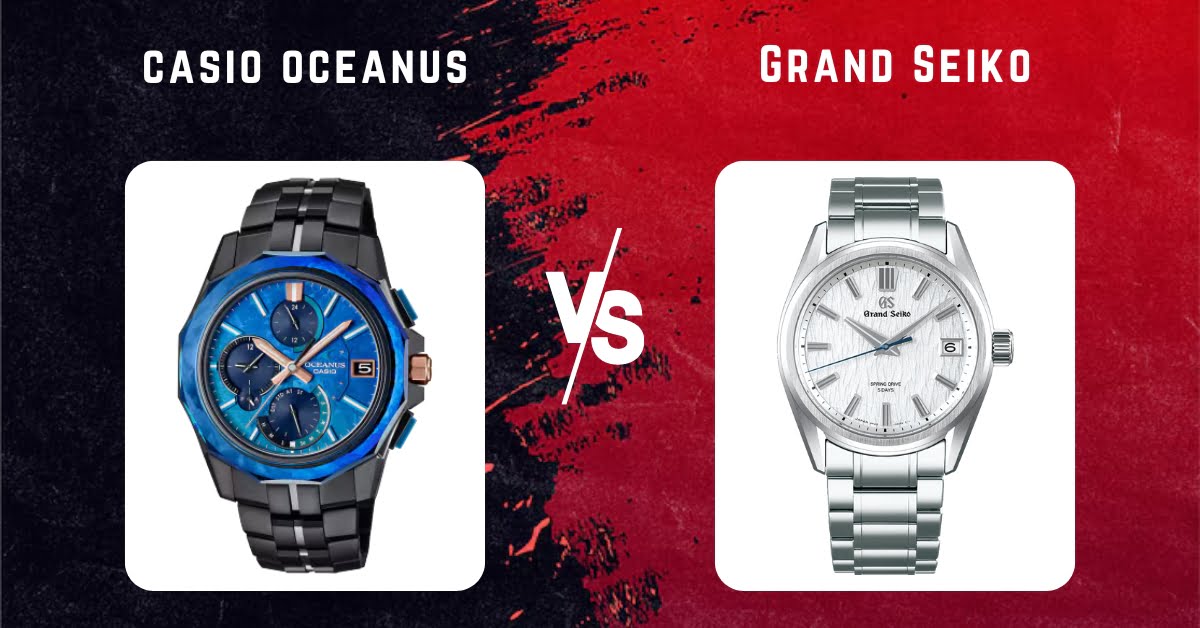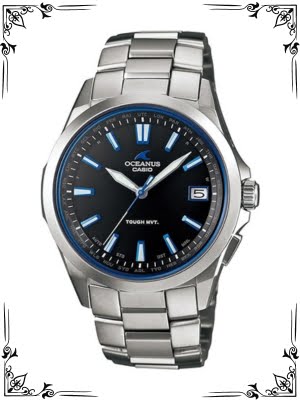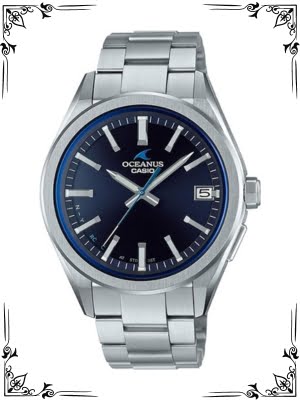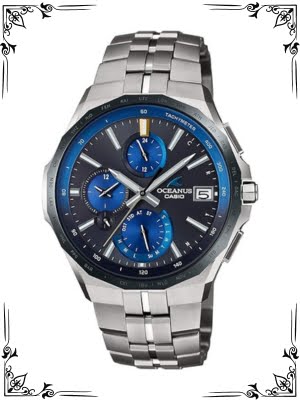In the realm of high-tech, feature-rich watches, two titans clash Casio Oceanus and Grand Seiko. Both boast exquisite craftsmanship, advanced functionalities, and a commitment to quality.
But for the discerning watch enthusiast, the question remains – which one reigns supreme on your wrist? This comprehensive guide delves into the intricacies of both brands, dissecting their technical specifications, design philosophies, user experiences, and potential drawbacks.
Unveiling the Brands’ Stories
Casio Oceanus: Launched in 1989, Oceanus represents Casio’s premium line, known for pushing boundaries in technology and design.
Their unwavering commitment to radio-controlled timekeeping ensures ultimate accuracy, while their use of high-quality materials like titanium and sapphire crystal elevates the Oceanus experience.
Grand Seiko: Founded in 1960, Grand Seiko embodies Japanese watchmaking excellence. Their meticulous attention to detail, characterized by the Zaratsu polishing technique and the Spring Drive movement, has earned them a reputation for unparalleled craftsmanship and innovation.
Technical Breakdown
Movement
At the heart of the watch, the movement dictates accuracy, power reserve, and available features.
Casio Oceanus: Utilizes a variety of quartz movements, some featuring Casio’s proprietary Multi-Band 6 Atomic Clock Synchronization. This technology ensures the watch automatically adjusts to the nearest atomic clock signal, guaranteeing near-perfect timekeeping accuracy.
Grand Seiko: Primarily employs their in-house developed Spring Drive movement. This revolutionary technology combines a traditional mainspring with a quartz regulator, resulting in smooth sweeping seconds of hand movement, exceptional accuracy, and a longer power reserve compared to standard quartz movements.
Some Grand Seiko models might utilize a high-accuracy quartz movement for a more traditional experience.
Table 1: Movement Comparison
| Feature | Casio Oceanus | Grand Seiko |
|---|---|---|
| Movement Type | Quartz (Various) | Spring Drive (Most Models), High-Accuracy Quartz (Some Models) |
| Timekeeping Technology | Multi-Band 6 Atomic Clock Sync (Some Models) | Spring Drive Technology (Most Models) |
Materials and Construction
The materials used in a watch impact its durability, weight, and overall aesthetic.
Casio Oceanus: Known for premium materials like Super Titanium (a lightweight and highly scratch-resistant titanium alloy), sapphire crystal, and ceramic bezels. This combination translates to a luxurious and robust build quality.
Grand Seiko: Employs high-grade stainless steel for cases and bracelets, with sapphire crystal as standard. Grand Seiko’s commitment to craftsmanship shines through in their renowned Zaratsu polishing technique, resulting in a mirror-like finish that accentuates the beauty of the case.
Table 2: Construction and Features Comparison
| Feature | Casio Oceanus | Grand Seiko |
|---|---|---|
| Case Material | Super Titanium (Some Models), Stainless Steel | Stainless Steel |
| Crystal | Sapphire (Most Models) | Sapphire |
| Bezel | Stainless Steel, Ceramic (Some Models) | Stainless Steel, Ceramic (Some Models) |
| Functions | Timekeeping, Date, Chronograph (Some Models), World Time, etc. | Timekeeping, Date, Power Reserve Indicator (Spring Drive Models), GMT (Some Models), etc. |
| Water Resistance | Varies (Up to 200 meters) | Varies (Up to 300 meters) |
Functions and Features
While both Oceanus and Grand Seiko offer core timekeeping functions, they cater to different needs with their additional features:
Timekeeping: Both excel in this core function, with Casio Oceanus offering radio-controlled technology in some models for unmatched accuracy and Grand Seiko’s Spring Drive movement delivering exceptional precision.
Date: Most models display the date window for added convenience.
Chronograph: A prominent feature in some Oceanus models, allowing you to measure elapsed time with precision. Grand Seiko offers chronograph functionality in some models, but it’s not as prevalent as in the Oceanus line.
World Time: Allows for easy tracking of time across different time zones. This feature might be available on some Casio Oceanus models and is more common in Grand Seiko models.
Power Source
Casio Oceanus: Relies on traditional batteries for some models, while others utilize solar-assisted charging. The battery life can vary depending on the model and usage patterns.
Grand Seiko: Most models rely on the automatic winding capabilities of the Spring Drive movement. However, some Grand Seiko models might utilize a traditional battery for the quartz movement. While the Spring Drive movement eliminates the need for frequent battery changes, it does require periodic servicing compared to a standard quartz movement.
Water Resistance
Casio Oceanus offers models ranging from 30 meters (3 ATM) for basic splash resistance to 200 meters (20 ATM) suitable for swimming and diving.
Grand Seiko models typically offer water resistance up to 100 meters (10 ATM) suitable for swimming and light water activities, with some models boasting a higher rating of 300 meters (30 ATM) suitable for diving. Always check the specific model’s specifications before engaging in water activities.
Design and Aesthetics
The visual appeal of a watch is a subjective experience. Here’s a breakdown of the design elements that distinguish Casio Oceanus and Grand Seiko:
Dial Design
Casio Oceanus: Offers a variety of dial designs, ranging from sporty and functional to elegant and sophisticated. Some models boast intricate details and multi-layered textures, while others prioritize clean and legible layouts.
Grand Seiko: Leans towards a more classic and sophisticated aesthetic. Dials often feature minimalist layouts, showcasing the beauty of the watch face and hands. Grand Seiko’s dedication to detail shines through in subtle features like applied indices and dauphine hands.
Case and Bezel
Casio Oceanus: Features a wide range of case sizes and styles, from bold and chunky to sleek and slim. Bezels can be crafted from stainless steel, ceramic, or even titanium, adding a touch of luxury and functionality.
Grand Seiko: Primarily offers cases in a moderate size range, with a focus on wearability and elegance. Bezels are typically crafted from stainless steel, complementing the overall classic aesthetic. Some Grand Seiko models might incorporate ceramic bezels for a more modern look.
Clasp & Bracelet
Casio Oceanus: Offers a variety of straps and bracelets, including metal bracelets, rubber straps, and leather straps. This allows for customization based on style and activity level.
Grand Seiko: Primarily utilizes high-quality metal bracelets that complement the overall sophisticated look. Some Grand Seiko models might offer additional strap options, but the selection is generally more limited compared to Oceanus.
Brand Image
Casio Oceanus: Represents Casio’s premium line, known for pushing technological boundaries and offering a diverse range of features and styles. They cater to a wider audience, from tech enthusiasts to those seeking a luxurious timepiece with advanced functionality.
Grand Seiko: Embodies Japanese watchmaking excellence. Their focus on meticulous craftsmanship, timeless design, and the innovative Spring Drive movement positions them as a premium brand for discerning watch enthusiasts who appreciate tradition and innovation.
User Feedback
By delving into user reviews, we can gain valuable insights into the real-world experience with these watches:
Casio Oceanus
Strengths: Users praise the premium build quality, advanced features like radio-controlled timekeeping and perpetual calendar, and a wide variety of styles to choose from. The luxurious materials and intricate dials resonate with those seeking a feature-rich and stylish timepiece.
Weaknesses: The price point can be a deterrent for some, and some users find the feature-rich dials overwhelming. Additionally, the reliance on batteries in some models might be inconvenient for those who prefer a maintenance-free experience.
Grand Seiko
Strengths: Users admire the exceptional craftsmanship evident in the Zaratsu polishing and the smooth sweeping seconds hand of the Spring Drive movement. The classic and elegant design is a timeless choice for those who appreciate subtle details and a sophisticated aesthetic. The high water resistance rating on some models caters to divers and water enthusiasts.
Weaknesses: The price point is significantly higher than most Casio Oceanus models. The focus on classic design might not appeal to those who prefer a more modern or sporty aesthetic. The Spring Drive movement requires periodic servicing compared to a standard quartz movement.
Common Problems
While both watches are known for their quality, it’s essential to consider potential issues:
Casio Oceanus:
Battery Replacement: Models relying on batteries might require periodic replacements, which can be inconvenient for some users.
Feature Overload: The abundance of features might overwhelm some users who prefer a simpler watch experience.
Higher Price Point (compared to standard Casio models): While Oceanus offers a competitive price point within the luxury watch segment, it can still be a significant investment compared to some Casio lines.
Grand Seiko
Limited Design Options: The focus on classic design aesthetics might result in a less diverse range of styles compared to Casio Oceanus.
Servicing Requirements: The Spring Drive movement, while offering exceptional performance, requires periodic servicing compared to a standard quartz movement. These service costs can be higher than battery replacements in some Oceanus models.
Higher Overall Price Point: Grand Seiko falls within the luxury watch category, making them a significant investment compared to most Casio Oceanus models.
Choosing Your Champion
The choice between Casio Oceanus and Grand Seiko hinges on your priorities:
Tech-Savvy Luxury with Advanced Features: If you crave cutting-edge technology like radio-controlled timekeeping, a diverse range of features, and luxurious materials like Super Titanium, Casio Oceanus might be the perfect fit.
With intricate dials, bold styles, and features like perpetual calendars and world time, it caters to tech enthusiasts and those seeking a feature-rich, statement piece. However, be prepared for a potentially higher price point and the need for occasional battery replacements in some models.
Timeless Elegance and Unparalleled Craftsmanship: For those who appreciate the meticulous attention to detail, the smooth sweep of the Spring Drive movement, and the timeless elegance of Grand Seiko’s design, there’s no substitute.
The Zaratsu polishing technique and the classic aesthetic resonate with watch enthusiasts who prioritize heritage and craftsmanship.
However, the price point is significantly higher, the design options might be limited for those seeking a sportier look, and the Spring Drive movement requires periodic servicing.
Ultimately, the best choice is the watch that resonates most with you. Consider trying both on if possible, to gauge comfort, style, and how it wears on your wrist. This personal experience can help you make an informed decision.
Additional Factors to Consider:
Activity Level: If you lead a very active lifestyle and require a higher water resistance rating (over 100 meters), some Grand Seiko models might be a better choice.
Maintenance Preference: If you prefer a low-maintenance experience, Casio Oceanus models with solar charging might be more appealing than Grand Seiko’s Spring Drive movement, which requires servicing.
Personal Style: Do you prefer a feature-rich, statement piece like some Oceanus models? Or a clean and elegant design with exceptional craftsmanship like most Grand Seiko models?
Conclusion
Both Casio Oceanus and Grand Seiko offer exceptional timepieces, catering to different preferences within the luxury watch segment.
Casio Oceanus bridges the gap between cutting-edge technology and luxurious materials, while Grand Seiko embodies Japanese watchmaking excellence with its timeless elegance and the revolutionary Spring Drive movement.
By understanding their technical specifications, design philosophies, user experiences, and potential drawbacks, you’re well-equipped to choose the champion that complements your style and needs. Remember, the perfect watch is an extension of you – a timepiece that tells not only time but also your story.
FAQs
Casio Oceanus vs. Grand Seiko: Which is more accurate?
Both Casio Oceanus (with Multi-Band 6) and Grand Seiko’s Spring Drive movement offer exceptional accuracy. However, Casio Oceanus with Multi-Band 6 technology might theoretically achieve a slight edge due to its automatic atomic clock synchronization.
Casio Oceanus vs. Grand Seiko: Which is more durable?
Both are known for their durability. Casio Oceanus’ Super Titanium offers superior scratch resistance, while Grand Seiko’s high-grade stainless steel and Zaratsu polishing technique ensure a robust and visually appealing timepiece.
Casio Oceanus vs. Grand Seiko: Which has a better battery life?
Casio Oceanus models with solar-assisted charging offer extended battery life. However, some models rely on traditional batteries. Grand Seiko’s Spring Drive movement eliminates the need for frequent battery changes, but it requires periodic servicing compared to a standard quartz movement.
Casio Oceanus vs. Grand Seiko: Which is more expensive?
Grand Seiko generally falls within a higher price range compared to Casio Oceanus. While Oceanus offers a competitive price point within the luxury watch segment, it can still be a significant investment compared to standard Casio models.
Casio Oceanus vs. Grand Seiko: Which brand is better?
There’s no single “better” brand within Casio. Both Oceanus and Grand Seiko are reputable lines with a strong tradition in watchmaking, catering to different preferences. Casio Oceanus appeals to those who value technology, features, and a wider range of styles at a competitive price point within the luxury watch segment.
Grand Seiko caters to watch enthusiasts who prioritize meticulous craftsmanship, timeless design, and the innovative Spring Drive movement, understanding that these qualities come with a higher price tag and potentially limited design options.
Ultimately, the “better” brand depends on your individual priorities and what resonates most with your taste and needs. Explore both lines, consider the factors mentioned throughout this guide, and choose the watch that tells not only time but also your story.




